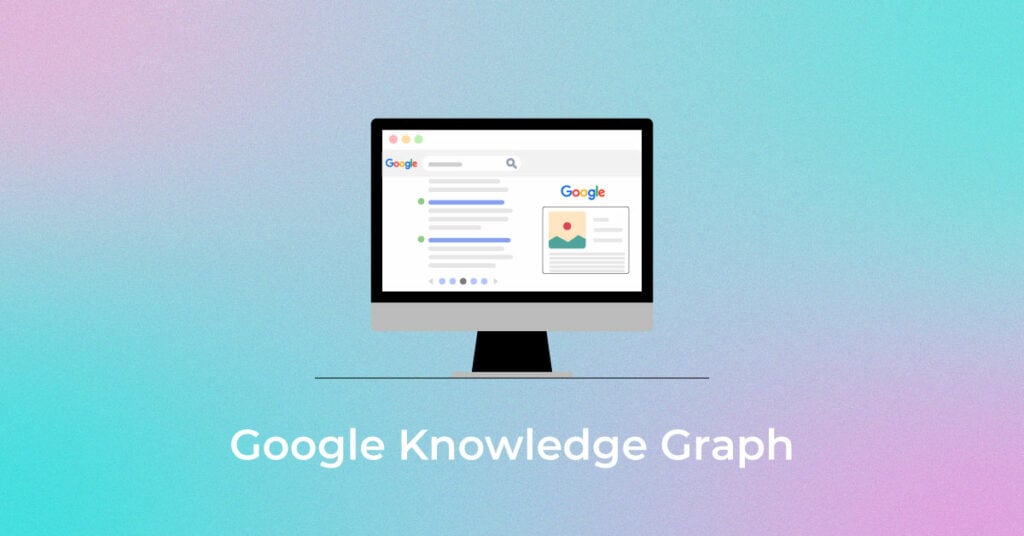Google’s Knowledge Graph is a graph-based data storage system implemented by Google for storing metadata collected by them “since May 2012” Google then uses this vast knowledge base in providing relevant search results to the user by understanding the intent and context behind the search.
Google’s core business is to provide the right information to all the questions of the user. To make this happen, google not only looks at the search term, but it also looks at the broader connection between the data. Google has been collecting information from the last decade and a half. This knowledge collection has been about a multitude of things such as people, places, etc., and facts associated with them. By now, Google has collected data for more than a hundred million entities and billions of facts related to them.
Check this video to know more about Google Knowledge Graph:

How Does the Google Knowledge Graph Work
Google’s Knowledge Graph uses a Graph database model where data is stored as entities(nodes) and edges. entities can be unique things or concepts like people, place, object, and non-tangibles things like ideas, film, TV show, etc. Each node has edges that are connected to several different entities, forming a non- linear hierarchy of data structure representing the relationship between nodes. Storing the data in these formats help Google to make better decisions on picking the accurate result to display. Google keeps on adding new entity or edges by implicitly and explicitly exploring the web.
When a user enters a query on the search box, the Google algorithms understand the semantic behind the words and quickly traverse the Knowledge Graph to find the most relevant answer to the query. Most of the time, questions are directly answered on the Search Result pages without the need to click on links that are showcased on the search result pages. Rich results have become a regular feature on the SERP, mostly because of the Knowledge Graph. Rich results include Featured Snippet, Knowledge Graph Panel, Knowledge card, Direct answers, Image carousel, to name a few. Yet, the Knowledge Panel Graph has majorly captured everyone’s attention since it is visually appealing and occupies considerable real estate on the SERP. Providing a client with the Knowledge graph is a testimony of quality SEO services offered by an SEO company in India
An example of a Rich Result is given below. You can see that different entities are populated with different kinds of data which is unique to them.
-
Direct Answer

-
Knowledge Card

-
Knowledge Graph Panel

-
Places

How to optimize Business for Knowledge Graph
Optimizing your Business for Knowledge Graph is as crucial as ranking on the top positions. The knowledge panel displayed on search results covers the sizeable real estate and increases the visibility of the business. Now, let us see what one has to do to get one’s business in the Knowledge Graph.
-
Schema Markup
Adding Structured data using schema markup is the best way to give Google the right signal about a website, and using specific markup with the right attributes is crucial. No wonder why it is included in each ‘Must have technical SEO checklist’. For getting featured in Google’s Knowledge Graph, implement Organisation schema markup with the important assets like name, Logo, and ‘same as’ properties, especially embedding all the social profiles, Wikipedia links in the ‘same as’ properties.
-
Content on the website
Your website is the most important digital presence that you can ever have. Optimizing the content on the website which comprehensively describes your business and brand can be used by Google to represent your business as an entity. Although it does not play a direct role in displaying rich results, it can help provide the added data needed by Google. Content is the most crucial on-page SEO factor & its quality can have a significant impact on rankings.
-
PR, Citation, and links
Creating a good PR strategy and getting mentions from top publications increases brand visibility and business name on the internet. Google views publications as a trusted source of information and data gathered through them are highly valued. Such accurate mentions can help your business to be included in the Knowledge Graph as a notable entity. Links and citations of business in the Industry body websites can be useful as well.
-
Entry in wikidata.org
Wikidata is part of the Wikimedia project. Having a wiki data entry for your business is valuable, but one should adhere to the guidelines set by Wikidata. Wikidata stores the data in the structured format from Wikipedia.
-
Creation of Wikipedia Page
Getting a Wikipedia page is much more complicated than wiki data entry. You can submit only objective information that can be referenced by trusted authority sources. Wikipedia always emphasizes on providing trusted sources, so that the content in the article is accurate. Wikipedia has such a level of authority that many times the description of the entity on Knowledge Graph panel is pulled from Wikipedia articles.
-
Social Profile of the Company
Creating a strong social profile for your business and being socially active to create positive noise around your business. Engagement with your followers amplifies your brand visibility, which can be picked by google for Knowledge Graph. LinkedIn and Facebook could be the best bet for a business as these websites are formal and have a good reach.
How Knowledge graph benefits Search Stakeholders
Due to the use of Knowledge Graph, Google has made the Search result landscape quite interesting with its extensive and vibrant results. Right from Knowledge Graph panel to image carousel to direct answers, all of them have helped people to gain the information they need and beyond.
Let us see how the knowledge graph has helped the user’s search results
-
Quality Result
With the introduction of the Knowledge Graph, the quality of the result has increased dramatically. It has helped Google to understand the meaning and relationship of the words used in a query. It has also made the result visually appealing to the users. Google gives utmost importance to quality and regularly makes algorithm changes to achieve the same.
-
Brand Visibility
Helps business to increase the brand Visibility by targeting the Knowledge Graph panel as its appearance covers a sizeable portion of Search real estate. It also encompasses the essential data about the business like the Logo, Addresses, Phone number, and their social profile. This increases the trust of the people for the brand.
-
Search Experience
People love quick answers, as it saves time. Instant quick answers can help increase the search experience of the user. The instant response has been a regular feature on the search result page for quite some time for certain types of queries like “what is the temperature today?”, “who is the President of the United States?”, thereby providing good search experience to the user.
-
Voice Search Support
With the Introduction & support for Voice Search features, Optimising for SEO is going to see a tectonic shift in terms of content. Some even consider voice being the future of search. The kind of queries searched will be much more different than the keyword we use today; it will be more like the natural phrases we use. Google, with the investment in Artificial Intelligence and Knowledge Graphs, can process the natural language to provide the relevant information more efficiently than ever. The increasing use of voice search for shopping is going to change the way ecommerce operates and shopping behavior. An Ecommerce SEO company should clearly watch these SEO trends in 2020 for effective optimization of their client’s website.
As Google continues to keep learning & evolving, by adding new entities & facts into its knowledge database, we may see an increased number of rich results on the search results pages, all thanks to the Knowledge Graph by Google.
Popular Searches
How useful was this post?
0 / 5. 0













6 thoughts on “Google Knowledge Graph: What It Is & How to Be Featured”
Great post on the Google knowledge graph.
Thanks. Check out our latest posts for more updates.
Very Good content and also very helpful. Really I did Success. Now I can Make Google Knowledge Panel for any person. Thank You so much for this helpful post.
Thanks. Read our latest posts for more updates.
Very Good content. Thank You so much for this helpful post.
Thanks.